The term "Variety Store" used to mean the Five and Dime, and in Bonham, in the 1950s there were three, dime stores, one national chain, one regional chain, and one independent. All three stores had red signs with gold letters. Every dime store I ever saw had the same type of red sign with gold letters. Maybe there was a rule or something, or a law.
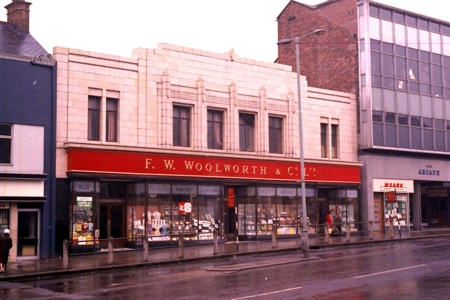
The biggest was the national store, F. W. Woolworth's, on the south side of the square. As a kid, I called it "Woolsworth," and as with all dime stores it had two departments of special interest to kids. One was the toy counter, where little glass-walled bins held an amazing assortment of the treasures of toydom. I was particularly fond of ten-cent balsa wood gliders, little parachutists in cardboard tubes, and cap-loaded sidewalk bombs.
The best glider looked like a F 84 Thunderjet, the first practical jet in the USAF. You slid the wing forward for trick maneuvers, loops and the like, and back for distance flights. There was another type, a swept wing craft that resembled a F 86 Sabre, but I never liked that model very much.
The Sabre had a big, clunky metal clip stuck on the front end for balance, and being a stickler for realism, I thought it destroyed the aesthetics of the craft. I doubt that I knew what aesthetics were, but I knew the destruction of same when I saw it. The Thunderjet had a little lead rod stuck in its nose for the same purpose, but it did not show, so it looked more like the real thing. Both of these aircraft cost a dime.
For thirty-five cents, you could buy a high-tech glider with wings that folded back along the body. It came with a stout rubber band attached to a short stick. The idea was to fold the wings back and, holding them in place, hook the rubber band into a notch in the nose and shoot the craft skyward. When the plane stopped climbing, the wings would snap open and the craft would glide back to earth.
One of my fantasies was to launch one of those models off the Empire State Building. In the second grade I drew a picture of a zeppelin flying over the Empire State Building to illustrate "What I Did on My Vacation." Everyone agreed it was remarkably accurate. It was even more remarkable when you consider I had never been to New York, much less seen a zeppelin.
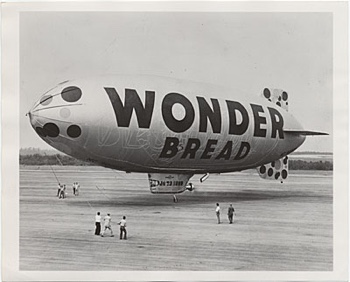
I had seen a blimp though, a USN surplus blimp, painted to look like a giant loaf of Wonder Bread—“builds strong bodies twelve ways.” I forget the twelve ways. I could look it up, but that’s what the Internet is for. This monster loaf used to fly around Tulsa, where we lived when I was two, tossing out miniature loaves of its namesake product to the people below.
Some kids liked the rubber band powered, propeller driven airplane, but not me. First, they cost at least fifty cents. You could buy five F 84s for that, more bang for the buck, or half a buck. Second, you spent most of the time winding up the propeller instead of flying; third, if your hand slipped the propeller whacked your finger, and fourth, they never flew.
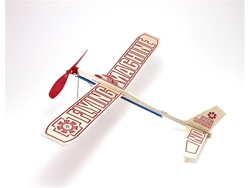
If you tried to take off from the ground, the craft just rolled along and never got airborne, and if you tried a hand launch, the plane invariably rode the torque, rolled over and took a nosedive into the street. Four or five crack-ups and all you had left were two wheels, a plastic prop, and a pile of sticks. The kid across the street was a sucker for these expensive, glitzy, non-performing models. He probably grew up to be procurement officer for the Pentagon. They like stuff that costs a lot and doesn’t work very well.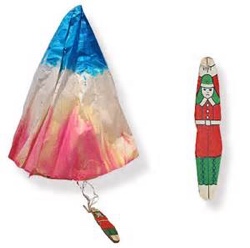

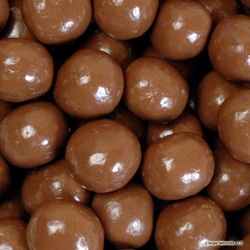
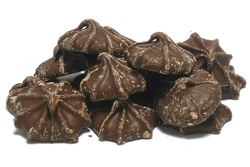

Woolworth had something else special. In the sidewalk in front of the store was big steel plate beneath which lurked a freight elevator. With boxes of merchandise stacked up on the street, someone somewhere would push a button and the two steel doors would slowly open as a platform rose to sidewalk level. The boxes would be loaded on the platform and it would descend into the basement beneath the closing doors as if by magic. Well, it was magic if you were six, and more than a little scary too. I would always walk around the plate lest it suddenly rise under my feet.
Duke & Ayers was the regional entry in the marketplace. It was a medium size store without the prestige of Woolworth or the character of the independent. I’m sure I went in the store when looking for something special, but I don’t have any concrete memories of the place. Duke & Ayers was over on the west side of the square just down from the Elite Theater. The third entry in Dime store parade was McIver’s toward the end of the block next to J. C. Penny.

Mr. McIver (Who else?) owned McIver’s. He ran the store, along with his wife and several elderly lady clerks. The help often outnumbered the customers, but somehow Mr. McIver kept it altogether. He carried unusual items the other stores did not have, replacement heads for dolls, and little top hats to go on the heads, and the best toy rifle I ever owned. I think he also supplied the gems of my personal defense arsenal, a pair of Gene Autry .44s.
There was another variety of variety store in town that had an ambience all its own and was stocked with wonders well outside the realm of the regular dime stores. Sandwiched between a barbershop and the newspaper office was Leeth’s Variety.
Piggy Leeth owned the place, and it is a well-known true fact (Dr. Murney. Das Vell Knowen Tru Factens. Berlin:1923) that any establishment run by somebody named "Piggy" has to be a real wonderment. You can look it up.
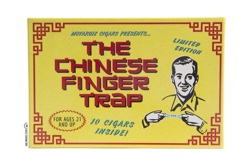
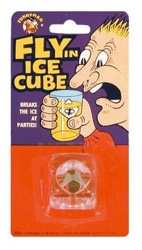
Piggy kept the extra special merchandise in a glass showcase. These items, like hot pepper gum, laxative-laced chocolates, stink bombs, itching powder, were far too potent to be left lying around in the open. One Saturday evening, while waiting to deliver the Sunday newspaper to the businesses around the square, I dumped a whole box of itching powder down the back of a co-worker’s back. He retaliated. I escalated. We itched.

We did not so much itch as we burned, and stung, and smelled funny. We called an armistice and retired to the rest room to wash off the stuff. The water helped some, but the relief was only temporary. The powder was embedded in our shirts. When we put the shirts back on, the itch started in again.
It was getting late, the papers had to be delivered, and we couldn’t walk around without a shirt. We chucked our itchy garments into the trashcan and spent most of our weekly pay on two new tee shirts. Piggy also sold us the shirts.
One shirt was red, the other one was blue, and they had pockets on the front. I had never had a tee shirt with a pocket before and thought it was really cool, but I wore it only that once. When I got home, my mother said it looked like something a hoodlum would wear so he could keep his Lucky Strikes in the pocket, and into the ragbag it went.
It is nigh on impossible find a real Five and Dime these days, one with wooden floors and a lunch counter, hundreds of little items nobody ever really needs and a unique aroma matched by no other place. The last one I saw was in Jackson, Tennessee forty years ago. It is harder still to find a classic emporium like Leeth’s Variety. With malls and shopping centers everywhere, we have more stores that ever, but somehow it seems like just more and more of less and less.